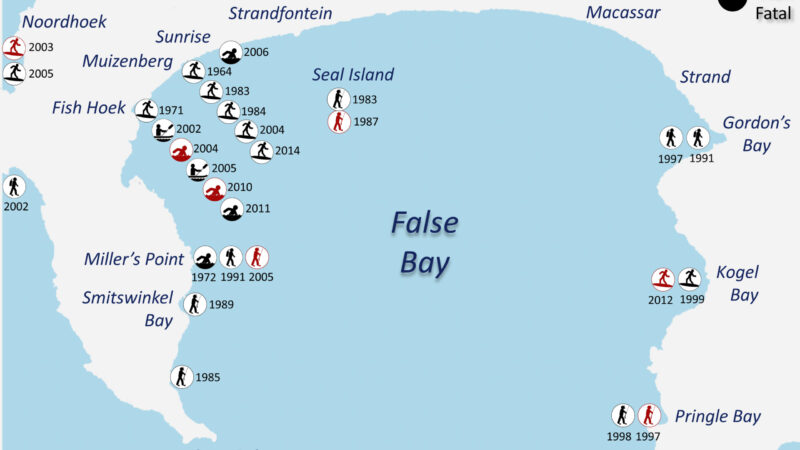Skimboarding has become an increasingly exciting sport, as the world’s best performers take their finless boards to challenging waves.
Skimboarding is the only water sport that doesn’t need waves, wind, or even water depth to be enjoyed.
You can ride it inland (flatland skimboarding) on a wet surface, or in the ocean (wave skimboarding) at a shorebreak.
After an early boom era – somewhere between the late 1970s and the early 1990s – the sport lost its appeal. But with the turn of the millennium, things changed for the better.
With the help of a new generation of riders, improved board materials, and the push from social media, skimming rose from the ashes and found a comfortable corner in the wave riding spectrum.
Today, skimboarders are taking on Puerto Escondido, The Wedge, Jaws, Nazaré, Teahupoo, and The Right.
Contemporary finless riders are now able to plane to a wave at an impossible distance and ride it for half a minute.
The future of skimboarding looks bright. But what could be done to take the sport to another level popularity and engagement?

1. Get Skimboarding Under a World Governing Body
Nearly every modern sport has a governing body. However, from an organizational perspective, skimboarding is an orphan sport.
It doesn’t belong to any international association or federation and is not officially recognized by the International Olympic Committee (IOC).
The closest entity would be the International Surfing Association (ISA).
But, for now, ISA is exclusively focused on shortboard surfing, longboard, bodyboarding, stand-up paddle (SUP) surfing and racing, bodysurfing, and wakesurfing.
Even though ISA says it governs “all other wave riding activities on any type of waves, and on flat water using wave riding equipment,” they have never included or promoted skimboarding in its agenda.
Skimboarding deserves a world governing body. Why shouldn’t it fit ISA’s umbrella?
2. Get 50 Percent of the United Skim Tour Dates Outside the US
The United Skim Tour (UST) is the only professional skimboarding circuit in the world. It was initially designed in 2000 and revamped in 2006.
The UST has been crowning world champions but has never really been a global tour.
Ocen in a while, there are a few events held outside the United States – mostly South America and Europe – but it is not enough to call it a proper “world tour.”
With a slightly stronger push and a good marketing plan, skimboarding could easily reach other continents and new audiences.

3. Run a Few Flatland Skimboarding Events Within the UST
The UST only runs wave skimboarding contest, but the truth is that flatland events can be really easy and cheap to set up.
There are many places where inland skimming is a popular discipline. Why not try and include a few flatland venues on the UST calendar?
4. Invite Surfing Stars to UST Events
Some of the world’s best surfers have already praised the talent of skimboarders and their stunts.
Tom Curren and Kelly Slater are fans of the sport and could help push the sport forward.
They could be invited to key UST events to attract younger generations to skimboarding, or act as global ambassadors of the sport.
5. Organize Specialty Events (Biggest Air, Longest Slide, Best Trick, Etc)
Skimboarding is a spectator-friendly water sport.
People on the beach can easily observe riders taking to the water and catching the pounding shore break waves.
When in flatland skimming mode, it’s also easy to get fans around the shallow water track with its ramps and obstacles.
As a result, side events with spectacular challenges could be a great way of bringing new enthusiasts into the sport.
Expression sessions featuring giant air moves, super long slides across a low tide beach, and innovative tricks would only improve the sport’s global awareness.

6. Set Up Pre, During and Post-Event Communications
You will never publicize a sport efficiently if you don’t communicate it. So, it’s paramount to spread the word on a regular basis.
UST organizers should find a way of producing pre, during, and post-event press releases, accompanied by high-resolution photos and video feeds.
It’s not that difficult. It only involves standardization of processes.
The same applies to live online broadcasts – you only need a YouTube account, a mobile phone, and WiFi coverage to get it done.
7. Simplify and Standardize the Judging Criteria and Make It Available Publicly
The rules, regulations, and major guidelines of a sport require stability over time.
It’s essential to have a simple, steady, and intelligible rule book for the sport, and make it available to athletes, fans, and media.
If everyone understands the rules of skimboarding, there will be more people willing to try it and follow it.

8. Publicize the World’s Best Skimboarding Spots
Whether they’re wave or flatland skimboarding spots, it’s important to know where they’re located.
People want to connect with their nearby skimming scene, but they must know where to go.
Photograph, film and write a few words about the world’s best spots. Make them publicly known.
9. Create an Association of Skimboarding Industries
Skimboarding is a small niche industry, but its players rarely speak to each other in order to promote their business.
It’s important to set up a think-tank group, in which board and gear manufacturers, and event organizers share thoughts and create an action-driven platform that helps push the sport forward.
The whole is always greater than the sum of its parts.
10. Identify Regional, National and Local Clubs and Associations
It’s important to know where skimboarders are to design an action plan with a worldwide impact.
Identifying the major skimming activities on a global scale, their organization levels and potential will help consolidate the infrastructures of the sport.
By working with each unit directly, it will be easier to improve its efficiency and help it grow faster – locally, regionally, and nationally.





Recent Comments